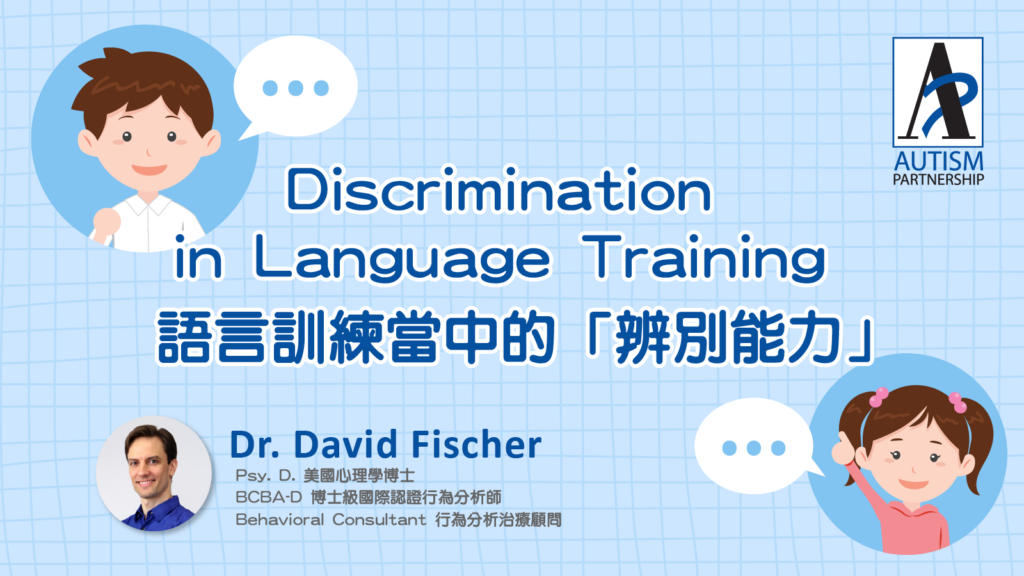
A vital aspect of language training in ABA is what we call “discrimination.” When we use that word, we are referring to the ability to differentiate between two things. In other words, knowing what a thing is and what it is not. Understanding discrimination can allow therapists to systematically build their students’ understanding of concepts. In this article, I will explain several common scenarios in which decisions regarding discrimination present themselves.
When teaching a child to discriminate between items be mindful of the difference between the items. For example, typically, when first teaching a label, you would want a substantial difference between the items that you are presenting. Therefore, when teaching “car,” you may have a horse, chair, and ball as other options to choose. Then, as the child demonstrate success, you would make the other options more similar to a car, such as a bus, bicycle, motorcycle, and tram. If the child can identify the correct item in that field, you can be more confident that he/she understands the concept of “car.”

Another factor to consider is what the child will be seeing when they answer your question. One element is how many items, or “distractors,” will be out. Identifying the correct item out of three is much easier than out of ten. Other important elements include the size of the area to scan and how neat the area is.

It is well known that presenting multiple examples of teaching targets is critical for teaching a learner to understand a new concept. Let’s use receptive labeling as an example. If you are trying to teach a child to identify “dog” but only use one picture, then that child will only learn that one picture is a dog. For the child to gain a generalized understanding of the concept of “dog,” you must use many different pictures with a wide range of dogs.

When teaching a child to understand actions, you need to think about the combination of verbs that you teach. Once again, at first, you will want to choose targets that are clearly different from one another. So, it would not be a good idea to choose “drink” and “eat.” On the other hand, “push” and “throw” may work well together because they look quite different. One other thought is related to how you pair objects with the verbs. You cannot use the same action all the time with a given verb and visa versa. You need to mix up the combinations; otherwise, the child will know what to do just by looking at the object and will not need to listen to the verb.

Once you are putting actions and objects together in your instructions, you can start by having just one item on the table. However, you will need to work up towards having multiple items out when giving the instruction. That way, the child must know the correct action to perform and the correct object to perform it with.

When first teaching instructions, we often begin with targets like “Get a tissue,” “Push the car,” or “Wipe your mouth.” When presenting these instructions, you need to think about how the materials will be arranged. For example, if you are doing “Open the door,” do not have the door all the way closed. Have it about half-way closed. That way, the child will have to demonstrate that he/she knows the difference between “open” and “close.”

The above describes several important considerations related to discrimination when working on receptive language. Being mindful of these issues when teaching will help your child learn more quickly.
Dr. David Fischer received a doctoral degree in Clinical Psychology from Rutgers University, USA, advised by Dr. Sandra Harris. Since 1999, he was worked in the field of Applied Behavior Analysis and with individuals diagnosed with a developmental disability. He completed his pre-doctoral internship and post-doctoral fellowship at the Marcus Institute in Atlanta, Georgia working in the severe behavior unit, short-term-out-patient clinic, feeding disorders unit, and early intervention clinic. From 2007 – 2011, he trained public school teachers to instruct and manage the behavior of their students diagnosed with Autism spectrum disorder. He also was the clinical coordinator of the Asperger’s College Program, which provides support services to Rutgers students diagnosed with Asperger’s Disorder.

Every little life is a special present for a family. From the time a baby is born, parents journey through lots of highs and lows, wishing for their child to grow up with a big smile, make great friends, find their own way in a job they love, and create a happy family. However, for […]

Autism Spectrum disorder can be diagnosed as early as 18 months. Research shows strong evidence on how effective Applied Behavior Analysis (ABA) can help children with Autism. It helps to deal with children’s challenging behaviors such as inattention, aggression, self-stimulation, etc. Howard, et al (2005) conducted a study to compare the effectiveness of 3 treatment […]

In today’s society where information flows freely, parents can easily receive different messages. However, these messages are often debatable or even wrong. Believing wrong information can easily lead to misguided choices and delay treatment, the consequences of which may last a lifetime. When conducting one-on-one consultations with parents, I often hear the following misguided views […]
Please share to let more people learn about ASD and ABA therapy:
AP holds the belief that with quality Autism Partnership Method (APM) treatment, individuals with autism should reach their fullest potential and achieve the greatest degree of independence and highest quality of life possible.

Sign up now to get ABA and Autism related news delivered to your inbox. Enter your email to get started
Hong Kong Center
Kowloon Center

All information received will always remain confidential. We will contact you as soon as we review your message. Thanks